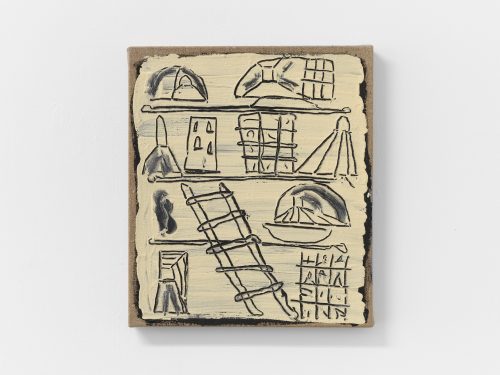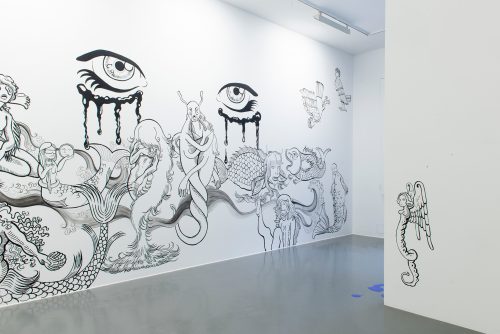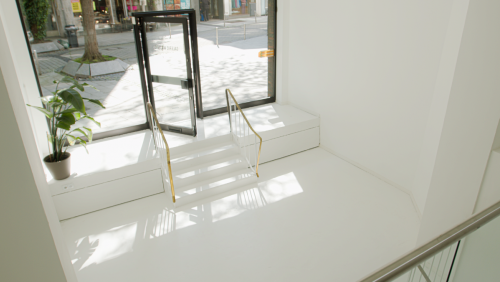
Jana Slaby, Julius Martin-Humpert
SACRED SOIL
Project Info
- 💙 Kaiserwache
- 💚 Christina Sperling, Lena Reckord, Ilja Zaharov
- 🖤 Jana Slaby, Julius Martin-Humpert
- 💜 Ilja Zaharov
- 💛 Christina Sperling, Jana Slaby
Share on

Advertisement
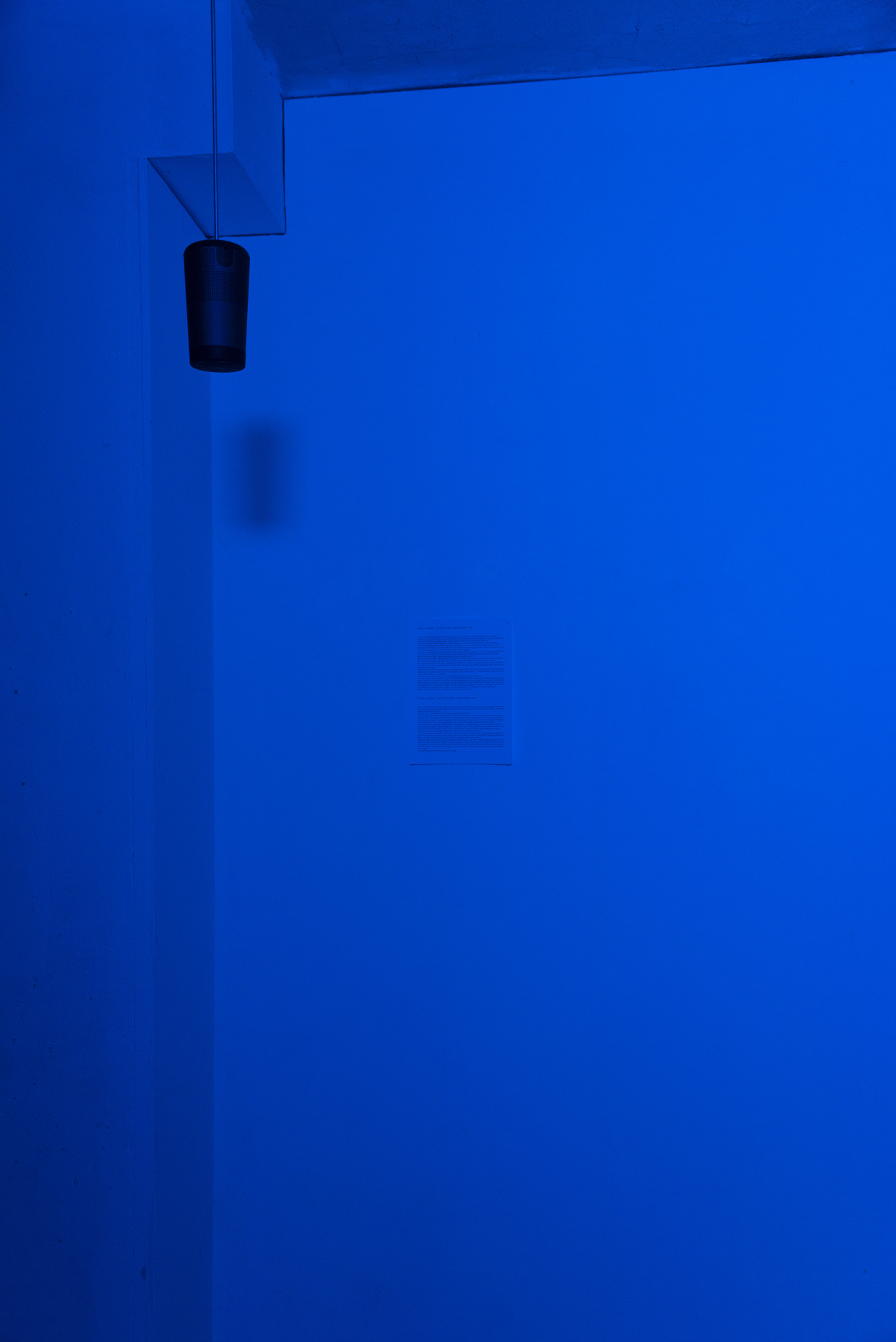
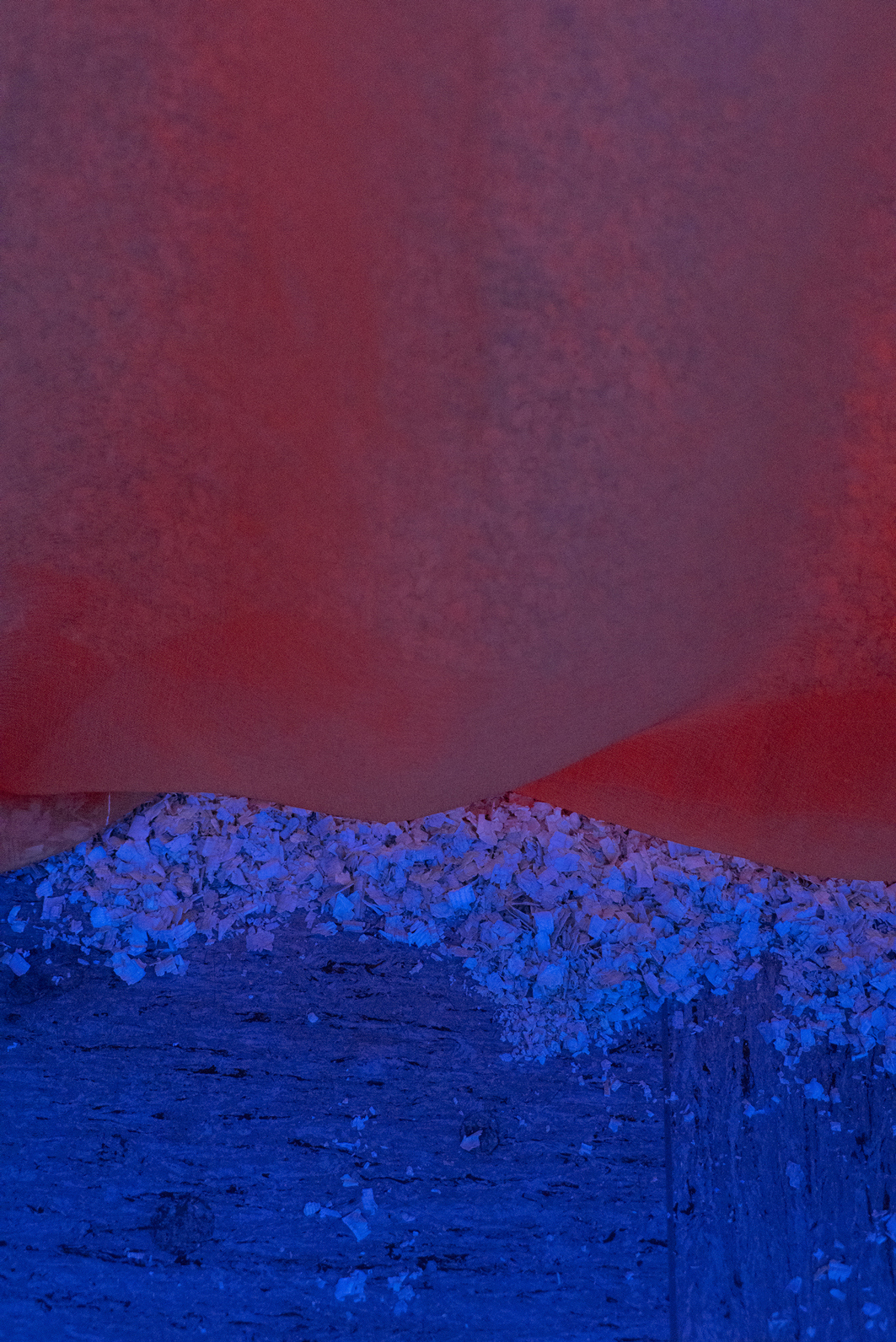

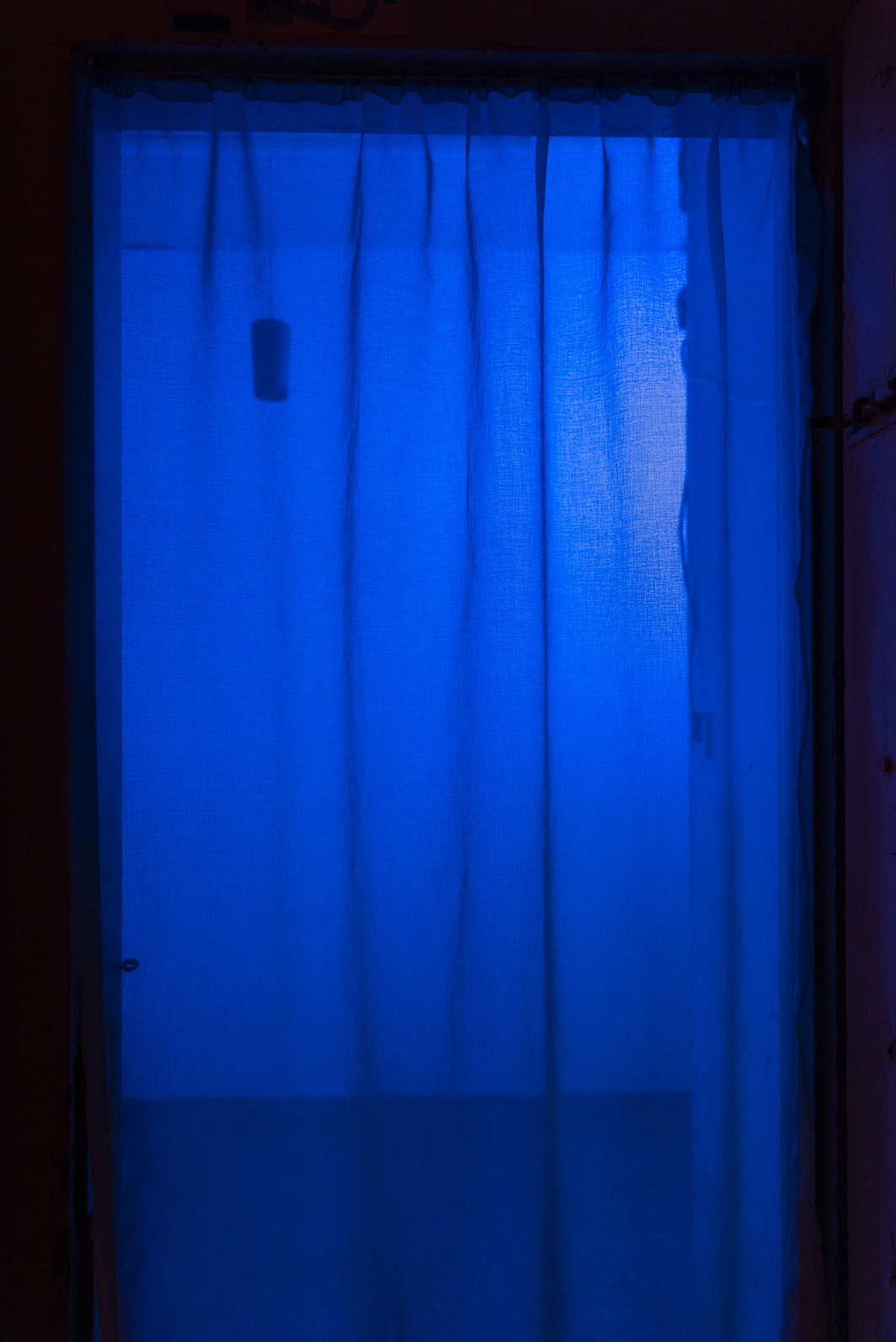
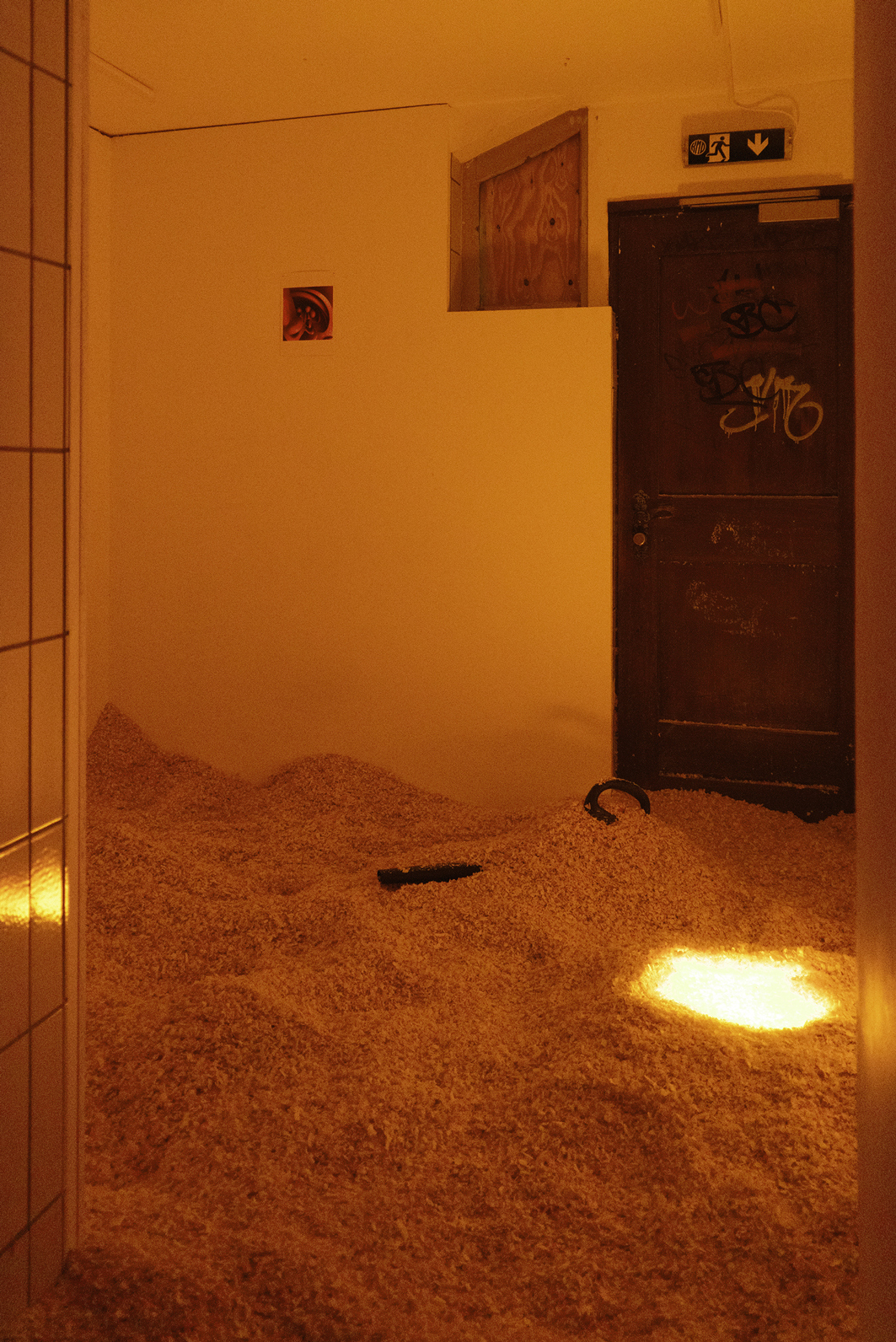
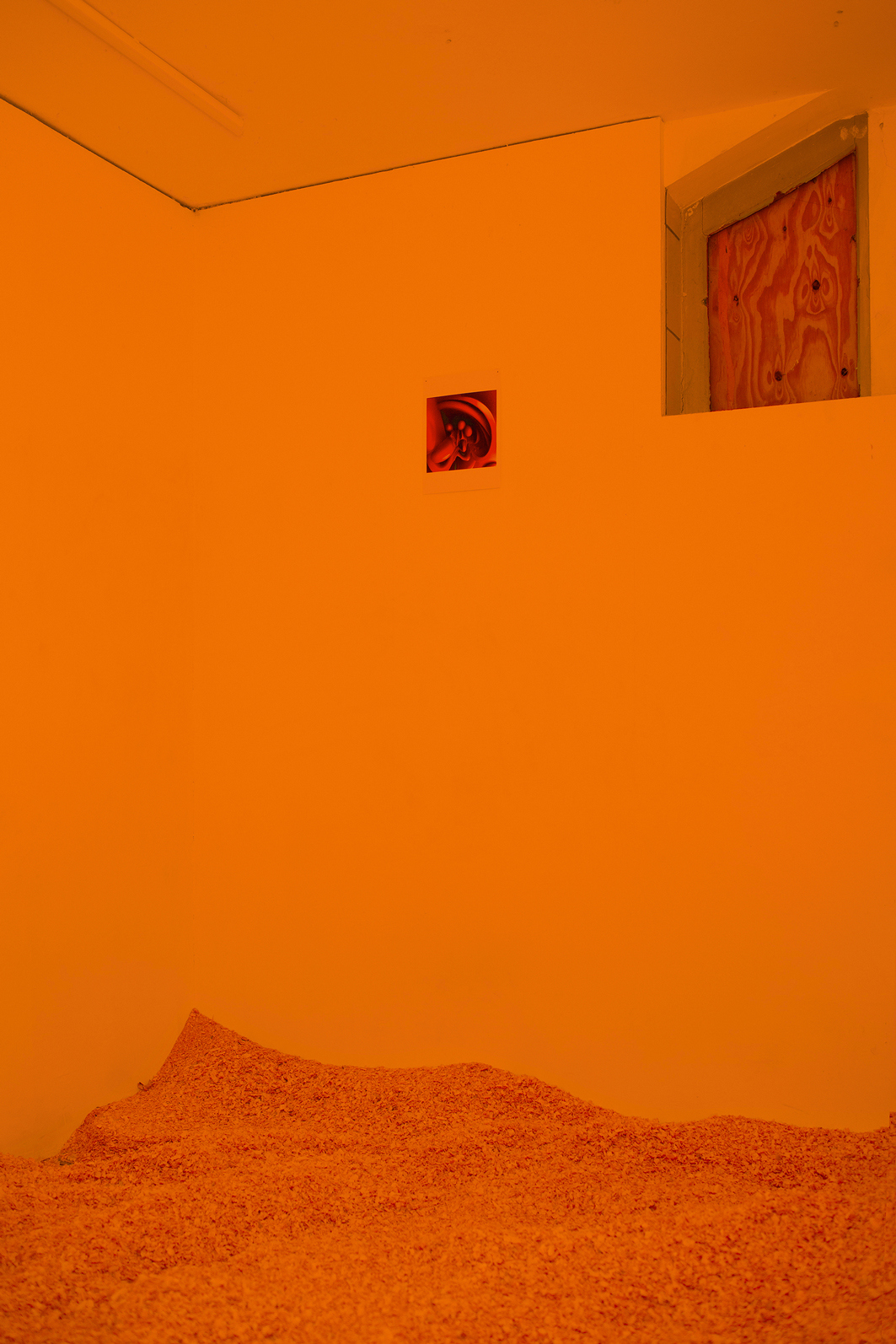
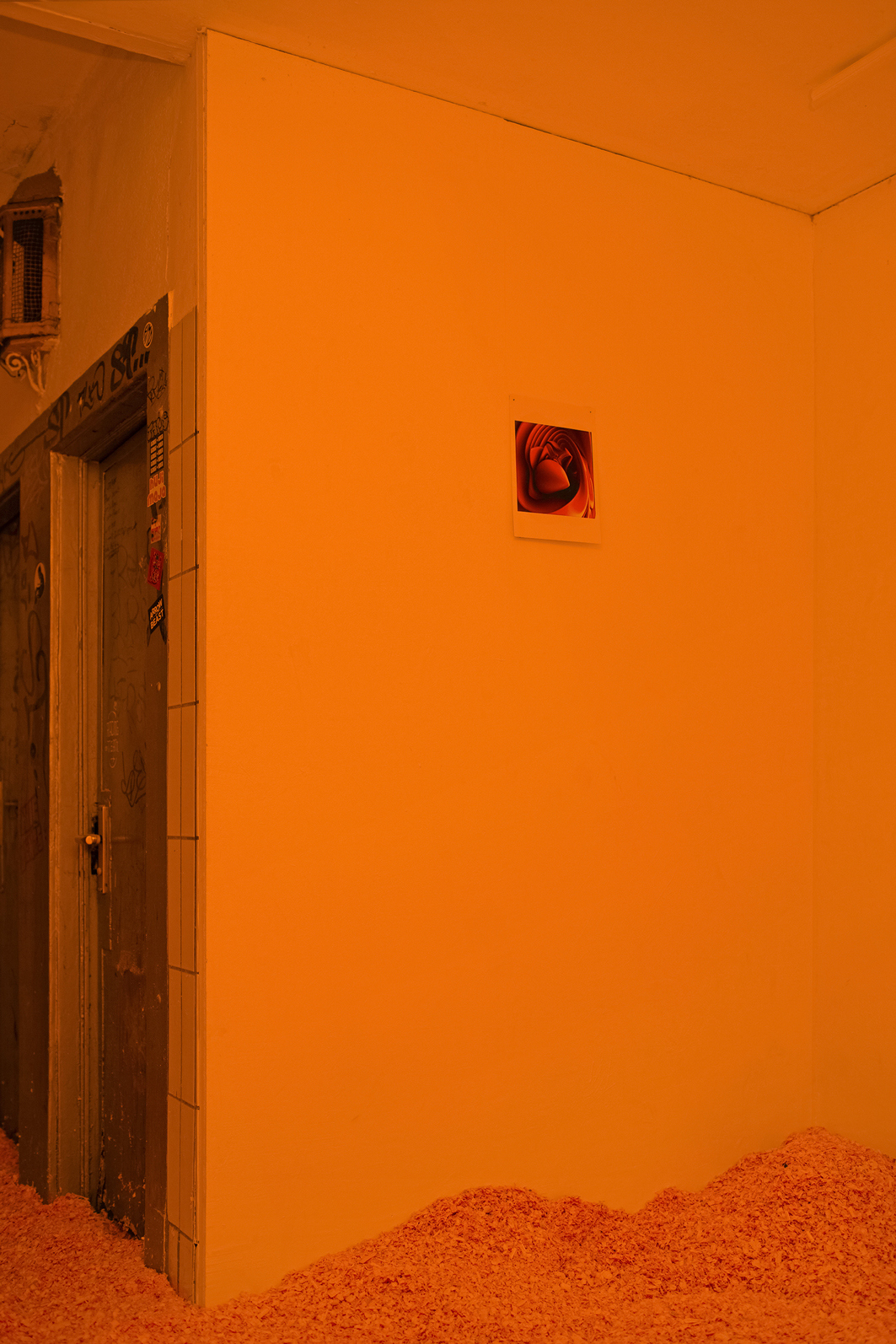
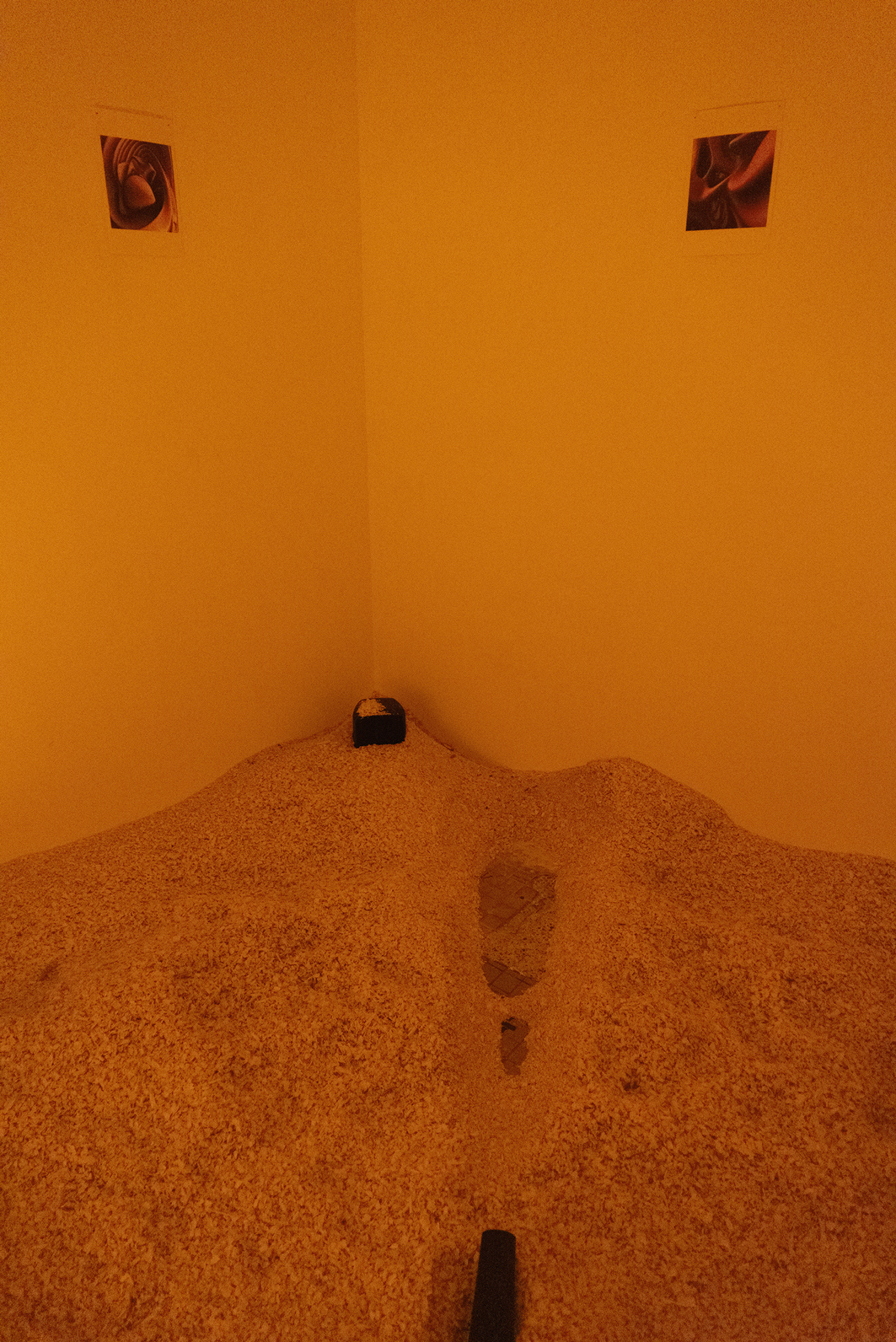

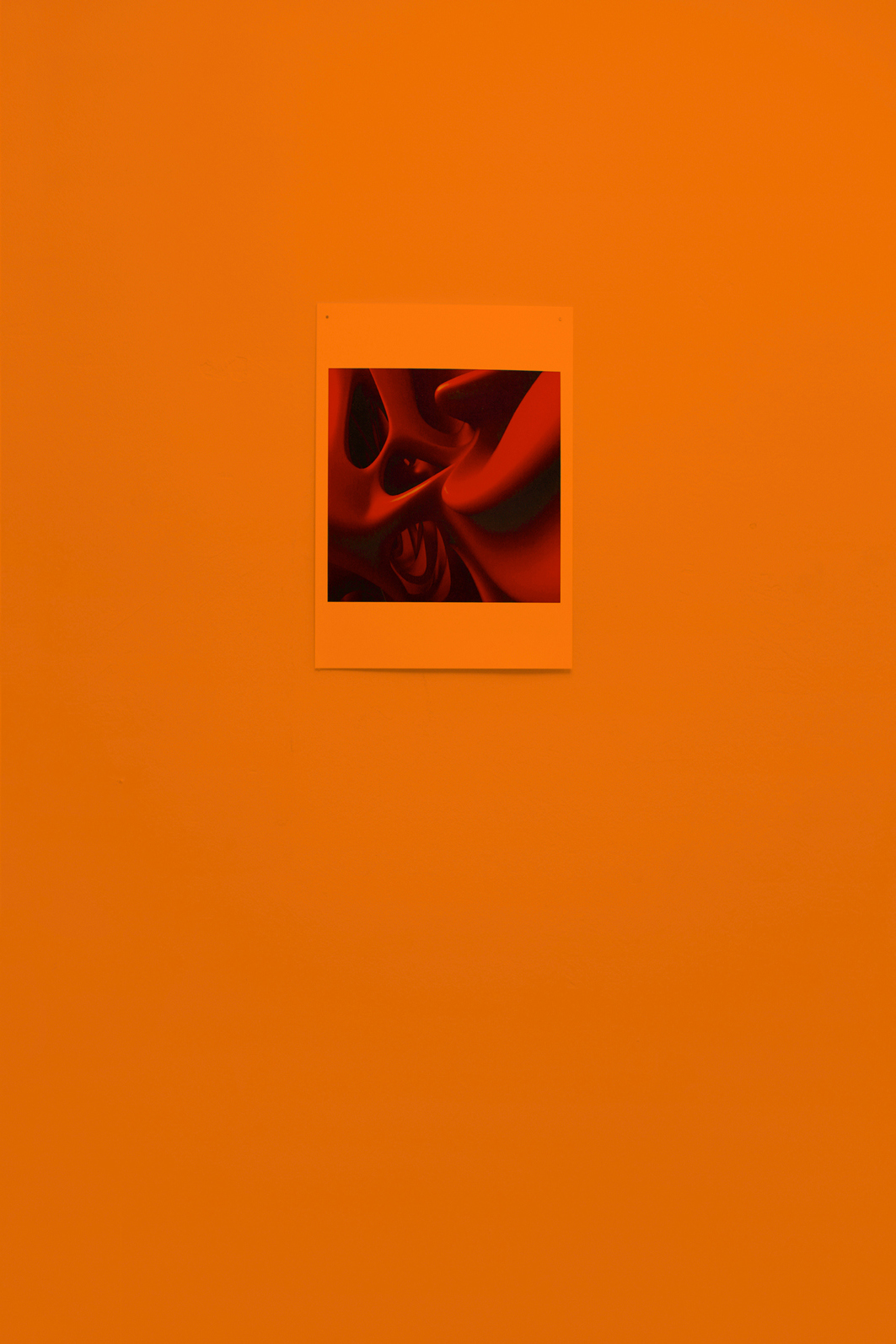
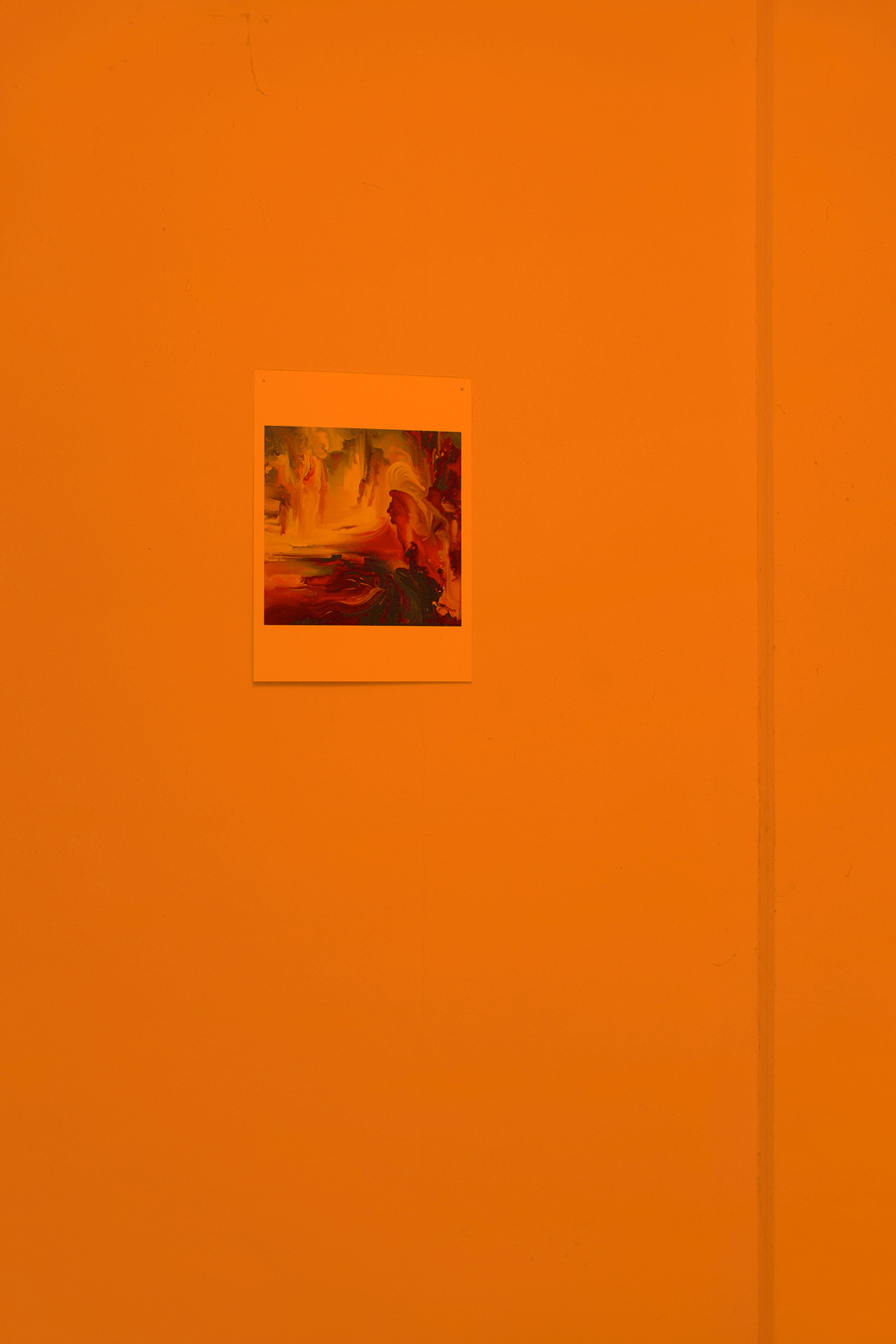
Kaiserwache is pleased to present a collaborative exhibition titled SACRED SOIL by Jana Slaby and Julius Martin-Humpert. The exhibition invites viewers to contemplate the intricate intersections of esotericism and far-right ideologies opening on October 06, 2023 at 7 pm. In addition, a public lecture by Dr. Sarah Pohl (Zentrale Beratungsstelle für Weltanschauungsfragen, ZEBRA) will expand on themes of the exhibition. The lecture will take place in German on October 21, 2023 at 7 pm at Kubus³ in Freiburg.
Slaby often follows a site-specific and context-oriented approach in her artmaking that leads her to work with materials collected on-site and engage with her surroundings critically. Her artistic inquiries into locations manifest themself in various forms including photography, sculpture, installation, performance as well as video and sound works. Photography serves as the cornerstone of her artistic process, forming the basis for the majority of her works. Through her lens, she strives to provide a fresh perspective that transcends conventional categories and challenges our assumptions about how we perceive objects and relate to them. In her studio practice, Slaby consciously avoids the use of non-recyclable materials and has been cultivating kombucha cultures (SCOBY) as a biodegradable material for her work since 2019. This eco-friendly production aligns with her broader exploration of our ecological footprint and the impact of human actions on the environment.
Martin Humpert's diverse body of work is characterized by his cross-media approach. A notable illustration of this approach is found in his recent project, "Agonie & Paranoia." This installation incorporates everyday items like a vacuum cleaner, a compressor, dog waste bags, and an inflatable snake. In conjunction with a 3D-animation retelling the Ancient Greek story of Laokoon these ordinary objects transform into stand-in performers accentuating the story on screen. In the loose interplay of materials and visual language, his work suggests that to recognize the specificity of an object or material is to recognize its inherent capacity for change and transformation, and requires a corresponding mutability in our understanding of it. For quite some time now, the artist has enriched his own artistic work with a substantial commitment to art mediation. In this role, he promotes collective creativity, inclusivity, and interdisciplinary dialogue while exploring the intersection of social issues and the artist's function within society.
In 1994, Vladimir Megre, an entrepreneur from Novosibirsk, Siberia, embarked on a trading voyage aboard a fleet of river steamers along the Ob River. During a stop in the middle of the Taiga two local senior citizens approached him with the plea to cut down a "ringing" Siberian cedar tree. According to their pagan belief, after absorbing cosmic energy during their 550-year lifespan, cedars emit a subtle ring as a signal for humans to harvest them as to utilize their energy for the planet's benefit. If not harvested within three years, these cedars stop ringing and start internally burning from the accumulated energy, leading to a slow and painful death. Megre declined the offer in doubt, although he couldn't shake the resonance of that moment. One of the elders placed a piece of cedar wood on a string around Megre's neck. This piece of wood, when rubbed, is believed to activate its healing properties (even curing cancer and AIDS!) and facilitate divine revelations for its carriers.
As he continued his trading voyage, this encounter should become the seed of an idea that would eventually blossom into his life's work and mark the beginning of the first volume of his bestselling book series "Anastasia." The narrative unfolds with another pivotal moment when Megre decided to seek out the elders after having delved into various literature on cedars. However, instead, he encountered Anastasia, their granddaughter and prophetess, who subsequently became central to Megre's conception of life and the cultivation of the eponymous cult-like movement. She is described as a "Russian beauty" with golden hair, smooth white skin, and remarkable abilities, including communicating with animals, understanding all languages of the world, telepathy, healing diseases, and even time travel. It is believed that every person of the Vedrussian race possesses these abilities, but all except a handful of Siberians have lost their connection to the ancient spiritual knowledge due to modern aberrations induced by technocratic urban societies. By following the teachings of Anastasia, as transmitted by Megre, individuals are offered a chance to reconnect with God - in the pantheistic understanding - and the righteous way of life. They are encouraged to embrace a self-sufficient lifestyle in harmony with nature, residing on a "kinship homestead" (in the birthplace of their ancestors) with the goal of establishing a family, ensuring the continuity of their lineage and eventually ushering in a new Golden Age of humanity. After several Anastasian settlements were established in Russia during recent decades, similar communities have emerged in Germany. Some of their members are openly affiliated with right-wing extremist and nationalist movements. This fact reinforces the need for inspection of the ideological overlaps that are apparent in the Anastasian way of life and the fascist concept of "Blood and Soil."
These alliances between esotericism, conspiracy theories and right-wing extremism which appear to grow stronger give reason for this exhibition to dig deeper into "sacred soil" and reflect in particular upon when Anastasian ideas might approach a potentially dangerous threshold. Slaby and Martin-Humpert are interested in this transitional zone in between esotericism, embracing a simpler life and right-wing extremism. Designed as an immersive experience, SACRED SOIL emphasizes direct engagement with the "Ringing Cedars" and envelopes participants in an atmosphere that activates all human senses, going beyond mere information delivery.
Upon entering the dimly lit exhibition, visitors must traverse two curtains, marking the passage into both the vestibule and the primary exhibition space. These curtains, made of lightweight fabric, feature a color gradient from light blue to orange, reminiscent of the hues seen in a picturesque sunset. Notably, these curtains are readymades that Slaby acquired when she came across them while searching for "esoteric curtains" online. Despite their initial connotation of providing a sense of comfort and protection from prying eyes, these very curtains paradoxically draw attention to themselves, prompting contemplation regarding what they might be concealing.
Already at the entrance the scent coming from the main room becomes immediately apparent. The entire floor of the main room is covered in a deep layer of cedar wood shavings, releasing a soothing balsamic fragrance throughout the space. The cedar shavings here resemble soil, as if the tree had transformed on its own to nurture the seeds of future cedar growth. The soft cedar layer encourages tactile exploration, inviting guests to sit, lie and move in it.
In one corner, a speaker emits a continuous, relaxing soundscape produced by Martin-Humpert. The serene ambiance embracing visitors is periodically cut through by a noisy leaf blower, generating a whirlwind of cedar shavings in the process. This blower operates for precisely 27 seconds in reference to the 27 years of agonizing internal decay experienced by cedars left unharvested at the end of their life, as believed in Anastasianism. An artist's edition, comprising a small cloth bag with a hand-drawn tag of the "Eye of Horus," permits visitors to take home some cedar shavings and make use of their healing properties.
The room is illuminated solely by an eerie orange glow emanating from beneath the shavings. Coupled with a disconcerting speech by right-wing extremist and neopagan Frank Willy Ludwig, which echoes from a speaker in the vestibule and discusses cosmic alliances and ancient Germanic heritage, the entire environment takes on an unsettling quality. Viewers are confronted with a challenging exploration of their personal boundaries and left to grapple with the conflicting insinuations independently.
The multi-sensory installation is complemented by a series of prints also installed in the main room. These prints feature AI-generated images, which have been generated in response to thought-provoking prompts. For instance, some of these prompts include "Expressionistic Painting to the Theme of Sacred Soil" and "Orange and Brown 3D Picture to the Theme of Soil and Cedar." It's a contemporary exploration of how AI interprets complex concepts like "Blood and Soil," inviting viewers to ponder the evolving relationship between technology, ideology, and art.
About the Artists:
Julius Martin-Humpert (*1993 in Freiburg) lives and works in Freiburg im Breisgau. After training as a carpenter, he went on to study Fine Arts at Edith Maryon Kunstschule in Freiburg where he graduated in 2023. Martin-Humpert participated in numerous group exhibitions at venues such as: Galeria Porca Preta, Monchique (2020); Kommunales Kino (BfF #1), Freiburg (2021); Huji Maja, Freiburg (2022); DELPHI_Space/gvbk, Freiburg (2022) and Museo Irpino, Avellino (2022). In 2022 he won the Jury Prize for his exhibition at the Open Art Festival in Freiburg and in 2023 he took part in the Stone Symposium Åsgård in Tangen, Norway.
Jana Slaby (*1987 in Berlin) lives and works in Leipzig and Berlin. She studied cultural sciences at the European University Viadrina in Frankfurt an der Oder and photography at the Ostkreuzschule in Berlin Weißensee. She also studied Fine Arts at the Academy of Visual Arts in Leipzig where she graduated in 2019. Slaby has a deep affinity with Finland, where she resided and pursued her studies at Kuvataideakatemia in Helsinki during 2014-2015. Her previous exhibitions were held at venues such as: Kunstraum Ortloff, Leipzig (2019); Sunny Brook Art Center, Leipzig (2020); Institut für Zukunft, Leipzig (2021); Die Wellenmaschine, Berlin (2021); DELPHI_Space/gvbk, Freiburg (2022) and the Mojave Desert, California (2023). She co-founded the artist-run gallery KASKL in Berlin.
About Kaiserwache:
The former public restroom, known to Freiburg residents as "Kaiserwache," was well-frequented due to its central location in the city and proximity to the banks of the Dreisam. However, with its original purpose decommissioned, the question of finding an alternative use for the heritage-protected building has arisen. This question has become increasingly relevant, especially given the growing lack of space in Freiburg, despite many buildings remaining vacant. With this in mind, KW positions itself as an offspace that is concerned with its own temporality, interested in suggesting alternatives beyond its interim use. The space at KW acts as a catalyst for the presentation of site-specific works and the facilitation of discourse surrounding the institution of the public toilet. By showcasing site-specific works, KW offers a unique platform for artists to reflect on and engage with the space's heritage and temporality.
Curated by Christina Sperling, Lena Reckord and Ilja Zaharov.
This exhibition was funded by the Cultural Office of Freiburg and the Regional Council of Freiburg.
Ilja Zaharov


